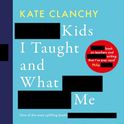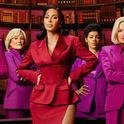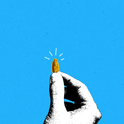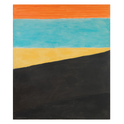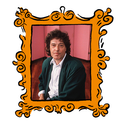This month, as the alarming agriculturalist on The Fast Show used to declare, I have mostly been preoccupied with… nappies! I know, I know. Prospect readers have their minds, no doubt, on higher things than what some stranger uses to contain his infant daughter’s below-stairs mustard apocalypse.
But bear with me. For thousands of new parents like myself, the artwork to which we are most often exposed is Disney’s felt-tip-pen reimagining of EH Shepard’s delicate pencil sketches, as positioned on the front panel of a pair of size one Huggies. Here, an inch or two south of the folded navel, is Pooh. Here is Piglet. Here is Eeyore. Every time your child craps, you meet Art.
This, you might reasonably object, isn’t art. This is marketing. Sure. But since the defining dynamic of the fine art world in the last 20 years has been its ever nearer approach to the condition of advertising, and advertising, at its top end, has become an artform all of its own, I regard that point as moot.
Here is something that started out as proper art—not gallery art, but if you regard Phiz (Dickens’s illustrator) and Arthur Rackham or even the illustrated books of William Blake as worth consideration, I think Shepard falls into place too—and made the journey into commercial or pop art via Disney. (Paul Johnson’s 2006 book Creators contains a splendidly eccentric essay comparing Walt Disney, favourably, with Picasso.)
Disney, as corporation rather than filmmaker, took that process on into advertising. Thanks to the endless reduplication of the images on every conceivable object from tea-towel to toothbrush, Winnie the Pooh’s life as artwork has been swamped by his life as marketing icon. And through that to Huggies. But it is very, very deeply odd that every Huggies comes tattooed with Winnie the Pooh. Unimaginable millions must have been spent in licensing fees to Disney for the rights to the characters. They’ve picked and chosen where the spend goes, too—the textured pattern on a Huggies wet wipe is a generic teddy bear without a hint of the Hundred Acre Wood.
The question is: whom is this image actually for? The wearer of the nappies is too young to make sense of the image (it faces out, in any case—front towards enemy, as they say in the landmine business). And the changer of the nappies is, for Pete’s sake, a grownup. Are we expected to gurgle with infantile pleasure every time we see Eeyore’s cute little donkey face?
Pampers, too, come adorned with cartoon animals; as do the waistbands of Bambo, the supposedly more environmentally right-on brand I’ve been peer-pressured into going for: blissed-out cartoon monkey; pink cat; green snake (with rosy cheeks and pink hearts floating above it to make clear it’s not, like, a baby-constrictor); winsome zebra; pink kangaroo, laughing crocodile (with anatomically improbable eyelashes).
And it’s not just nappies. Except for things like sterilisers and breast pumps—where the look is domestic/medical: all clean lines and sparkling curves, like the packaging of dishwasher tablets—the language of selling baby stuff to adults is about bright colours, cartoons, bubbly writing, hearts and butterflies.
There is, clearly, a slippage here. In the first place, there’s the slightly absurd assumption that parents will find their baby cuter if it is wearing a cute animal on its nappy: that Pooh on the nappy’s crotch, if you like, supplements or even competes for the parents’ attention with the gurgling creature wearing it.
But there’s something odder still than that going on. The assumption seems to be that becoming a parent makes you infantile yourself. You are supposed to be drawn to pink giraffes and crocodiles with eyelashes. The only way I can explain it is in terms of an unspoken theory of parenting that has you identifying with the child; or, more precisely and curiously, identifying with the version of the child that you remember being.
It’s not, after all, Tellytubbies or Fimbles that show up on these nappies: it’s good old-fashioned Winnie-the-Pooh. It’s the art that you, as a parent, consumed when you were a child.
This retro thing ties in with children’s toys too. Think of those wooden choo-choo trains. We teach our toddlers: “What does the train say? Wooh! Wooh!” Aeroplanes still have propellers and go “Neeaaaaoooowwww!” Yet neither of those things has been general in the world since long before I was born.
A complementary trend sees babies in designer labels, punk-rock babygros, or T-shirts with knowing, hipster slogans. We’re on the one hand using babies as billboards for adult ideas; and on the other, being sold the chance to re-infantilise ourselves. My suspicion is that, in our culture, parenthood is now at least subliminally about getting a second chance at being a kid.

Baby with generic animal on nappy
Cultural notebook
The funny thing about nappies—no, bear with me, it’s worth it I promise—is the cute cartoon animals on them. Who is that for?
August 27, 2009
